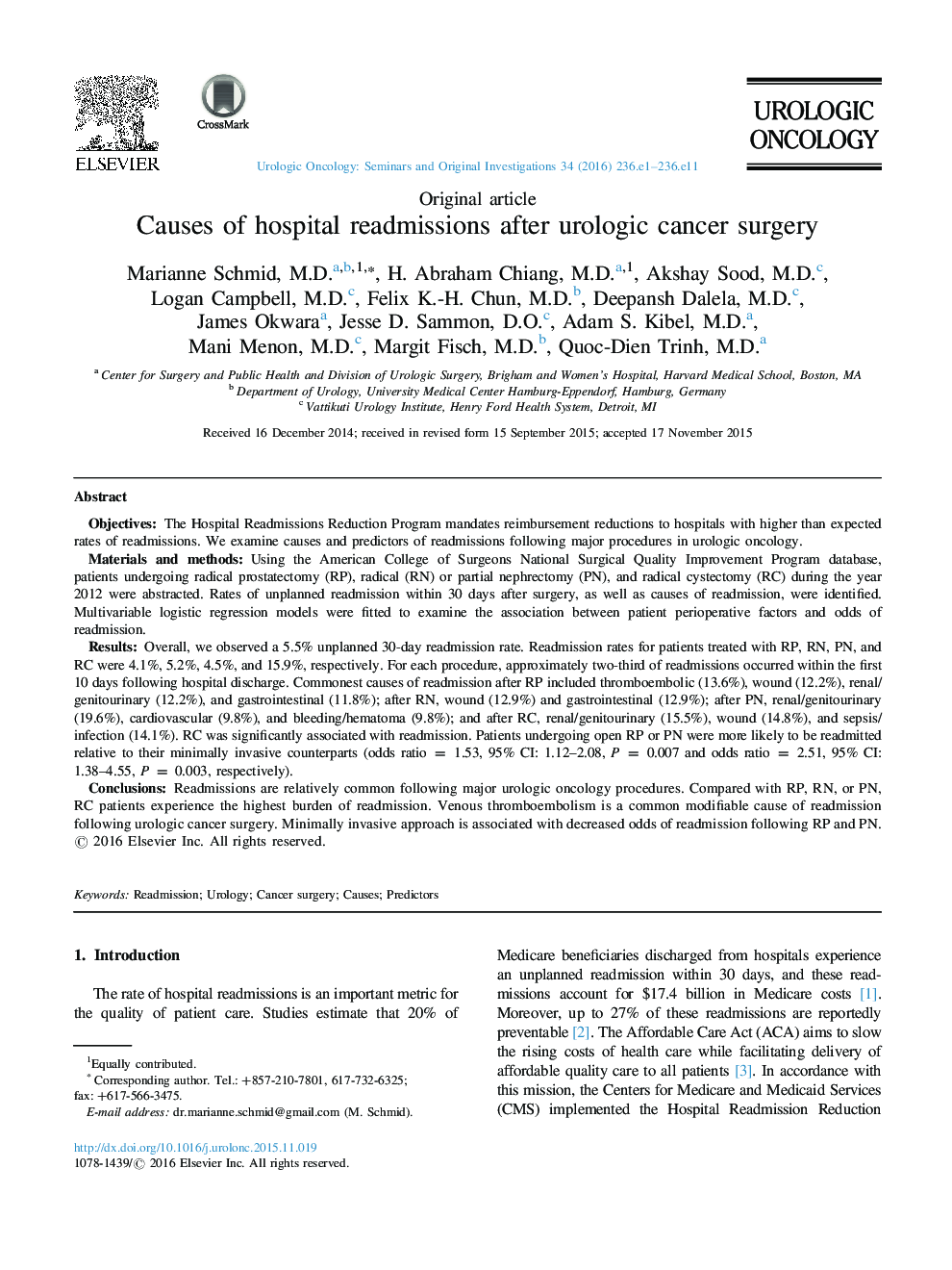| کد مقاله | کد نشریه | سال انتشار | مقاله انگلیسی | نسخه تمام متن |
|---|---|---|---|---|
| 6193943 | 1259334 | 2016 | 11 صفحه PDF | دانلود رایگان |
- Overall, we observed a 5.5% unplanned 30-day readmission rate following major urologic cancer surgeries.
- Compared with radical prostatectomy or partial/radical nephrectomy, radical cystectomy patients experience the highest burden of readmission.
- Venous thromboembolism is a common modifiable cause of readmission.
- Minimally invasive surgery is associated with decreased odds of readmission following radical prostatectomy and partial nephrectomy.
ObjectivesThe Hospital Readmissions Reduction Program mandates reimbursement reductions to hospitals with higher than expected rates of readmissions. We examine causes and predictors of readmissions following major procedures in urologic oncology.Materials and methodsUsing the American College of Surgeons National Surgical Quality Improvement Program database, patients undergoing radical prostatectomy (RP), radical (RN) or partial nephrectomy (PN), and radical cystectomy (RC) during the year 2012 were abstracted. Rates of unplanned readmission within 30 days after surgery, as well as causes of readmission, were identified. Multivariable logistic regression models were fitted to examine the association between patient perioperative factors and odds of readmission.ResultsOverall, we observed a 5.5% unplanned 30-day readmission rate. Readmission rates for patients treated with RP, RN, PN, and RC were 4.1%, 5.2%, 4.5%, and 15.9%, respectively. For each procedure, approximately two-third of readmissions occurred within the first 10 days following hospital discharge. Commonest causes of readmission after RP included thromboembolic (13.6%), wound (12.2%), renal/genitourinary (12.2%), and gastrointestinal (11.8%); after RN, wound (12.9%) and gastrointestinal (12.9%); after PN, renal/genitourinary (19.6%), cardiovascular (9.8%), and bleeding/hematoma (9.8%); and after RC, renal/genitourinary (15.5%), wound (14.8%), and sepsis/infection (14.1%). RC was significantly associated with readmission. Patients undergoing open RP or PN were more likely to be readmitted relative to their minimally invasive counterparts (odds ratio = 1.53, 95% CI: 1.12-2.08, P = 0.007 and odds ratio = 2.51, 95% CI: 1.38-4.55, P = 0.003, respectively).ConclusionsReadmissions are relatively common following major urologic oncology procedures. Compared with RP, RN, or PN, RC patients experience the highest burden of readmission. Venous thromboembolism is a common modifiable cause of readmission following urologic cancer surgery. Minimally invasive approach is associated with decreased odds of readmission following RP and PN.
Journal: Urologic Oncology: Seminars and Original Investigations - Volume 34, Issue 5, May 2016, Pages 236.e1-236.e11
